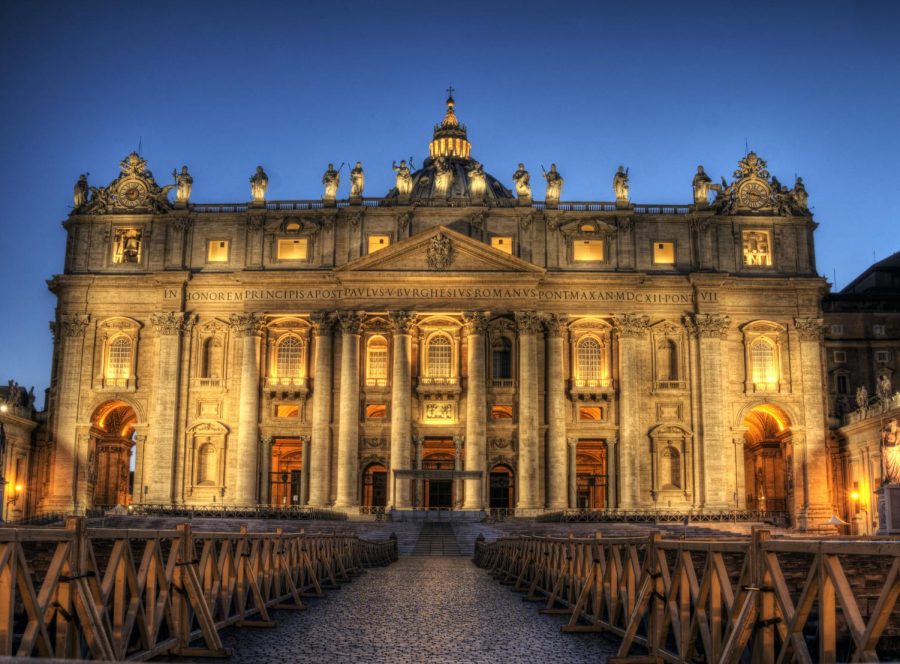
The Dead Sea Scrolls are arguably the most important archaeological discovery of the century. Initially found in a cave by a Bedouin shepherd, they gained national prominence as scholars verified their accuracy and discovered further scrolls in surrounding areas. They validated the Bible, revealed previously unknown schisms between practitioners of ancient Judaism, and posed questions that theologians are still debating to this day.
And, now, they’ve come to Milwaukee.
Discovered between 1947 and 1956, these 2,000-year-old scrolls are the centerpiece of the Milwaukee Public Museum’s new exhibit “Dead Sea Scrolls and the Bible: Ancient Artifacts, Timeless Treasures,” the largest temporary exhibit ever produced by the museum.

According to Marquette theology professor John Schmitt, the scrolls were originally found in the caves of Qumran, northwest of the Dead Sea, and can be divided into texts from the Hebrew Bible, some non-biblical, apocryphal texts, and a subset of non-biblical texts that were previously unknown to scholars.
Schmitt said these latter texts revealed information about a “community in rebellion against Jerusalem,” and referenced a “Teacher of Righteousness,” who led a group outside of Jerusalem around the time of the writings, that scholars had not previously been aware of.
In addition to the fragments of the scrolls and some copies made of scrolls too fragile to transport, the exhibit includes artifacts from the time period of the Dead Sea Scrolls’ creation such as tablets, ancient Bibles, pottery and coins.
Ellen Censky, Senior Vice President for Museum Programs, said the museum gathered these additional items to help visitors get a sense of what the world was like when the scrolls were written.
“These artifacts put the writings into context,” said Censky.
According to Carter Lupton, curator for the exhibit, the idea to bring the Dead Sea Scrolls to Milwaukee had been brewing since 2004. He said the decision to bring in more than just the scrolls had been made very early on in the process.
The exhibit’s setup is designed to establish this intended context first, before visitors get to the scrolls themselves.
Upon entering, artifacts dated between 200 B.C. and 70 A.D. are on display, reflecting the period during which the scrolls were produced. Some of the artifacts are as mundane as coins and glassware, while others are stone coffins etched with names of the dead or medical instruments meant to mix and apply salves to the wounded. To further aid patrons in their understanding of the historical period, a miniature model of Jerusalem shows the Holy City as it would have looked during the time of Jesus.
But it’s the Dead Sea Scrolls that form the heart of the exhibit. Viewers are first met with artificial copies of some of the more complete scrolls, including the Isaiah Scroll, the only scroll intact from beginning to end.
The real scrolls are just around the corner, in a dimly lit, shrine-like room Censky said is designed to preserve the documents as much as is physically possible. Within, fragments of the scrolls lie behind glass with translations from the Hebrew provided for visitors. The fragments vary in size, from little scraps the size of a fingernail to larger pieces that are about the size of your hand, but every one has the gravity of 2,000 years of history behind it.
This darkened room holds some of the non-Biblical scrolls as well. One, the Jeselsohn Stone, appears to tell a tale of a Jewish rebel put to death by the Romans who was prophesied to return from the dead in three days.
The story may sound familiar, but there’s a twist — the stone has been dated to the first century B.C., and predates the time when Jesus would have lived, which may indicate the concept of a resurrected prophet already existed at the time of Jesus.
On the less theological side of things, there’s also the Copper Scroll, the only Dead Sea Scroll to be written on metal. This scroll is significantly more down to earth than the others, being a list of directions to find treasure buried in the area surrounding the caves at Qumran — treasure that has never been found.
The exhibit doesn’t end with the scrolls, however. After the scrolls’ sanctuary, viewers are then treated to a series of ancient Bibles, including the 10th century Masoretic Bible, the oldest copy of the Hebrew Bible written in book form known to exist, and the 1483 Koberger Bible, an illuminated Bible normally stored right here at Marquette.
The exhibit closes with two local spotlights: one for John Trevers, the Milwaukee photographer who helped make the scrolls famous and took the earliest and best documented photos of the scrolls, and another for Golda Meir, a Milwaukee native who would eventually become the fourth Prime Minister of Israel in 1969.
The overall effect of the exhibit is to feel as if you’ve been told a fascinating story — a feeling that Censky said is one of the reasons students should be interested in coming to see the scrolls.
“The discovery of the scrolls is really an intriguing detective story,” said Censky, who added that this exhibit is likely students’ only chance to see the real scrolls. “When you were older, you’d shoot yourself if you didn’t go.”
College of Arts & Sciences sophomore Mai Ka Thor said she went to the exhibit Monday with her theology class, New Testament Overview, and that seeing the scrolls and the rest of the exhibit was amazing. Thor said she had seen posters about the exhibit before her professor had mentioned it, but didn’t really know much about it until going to the museum.
“I was surprised, because there was even more than the scrolls there,” said Thor. “I’m a person who loves history, so it was very interesting … it’s a really big exhibit.”
Ironically, Thor’s only problem with the exhibit was its size. Her class schedule didn’t allow her enough time to visit the entire exhibit.
“You have to make sure you budget your time well,” said Thor.
In the end, however, Thor said she’d love to go again, and would encourage anyone interested to do the same.
“It’s really cool just to see the scrolls themselves,” said Thor. “It’s not every day that we get to see something from so many years ago.”
The Dead Sea Scrolls exhibit will be at the Milwaukee Public Museum until June 6. Tickets are $22 Monday through Thursday, and $26 Friday through Sunday.





